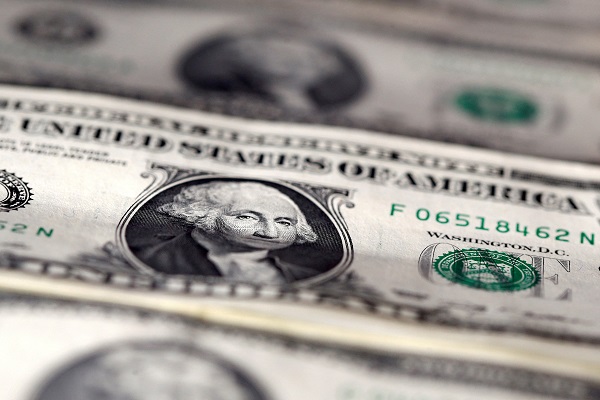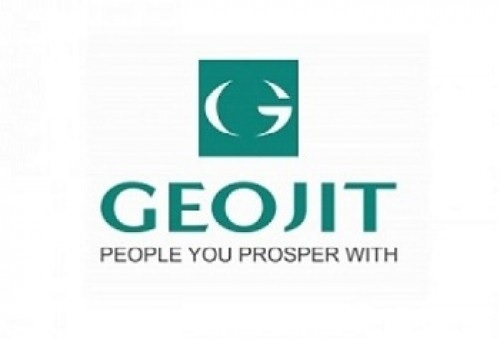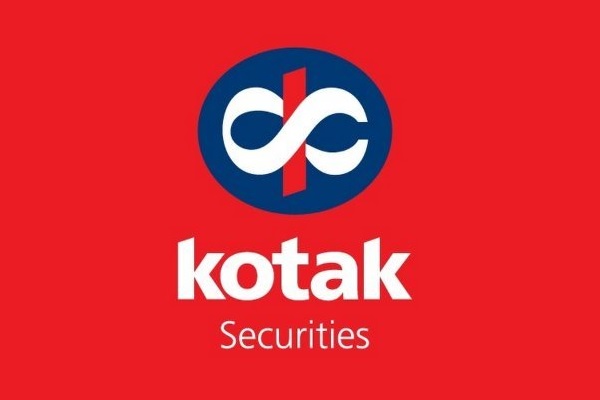Aluminium trading range for the day is 256.3-261.5 - Kedia Advisory

Gold
Gold yesterday settled higher by 0.79% at 117,265 as safe-haven demand strengthened on concerns over a potential U.S. government shutdown and growing expectations of further Federal Reserve rate cuts. Market sentiment was driven by political deadlock in Washington, with little progress seen in averting a shutdown that could halt key services. Traders now price in a 91% probability of a 25-basis-point rate cut at the next Fed meeting, according to CME’s FedWatch tool, while Fed officials remain cautious on balancing inflation risks. ETF flows were supportive, with SPDR Gold Trust holdings rising 0.60% to 1,011.73 metric tons. Central bank activity also underpinned sentiment, with the People’s Bank of China extending its gold purchases for a tenth straight month. However, physical demand signals from Asia remained mixed. China’s August imports via Hong Kong fell 39.1% from July to 26.7 metric tons, reflecting weaker consumer demand amid widening domestic discounts of $31–$71/oz. In contrast, premiums in India remained firm at up to $7/oz, the highest since late 2024, supported by festive demand. Swiss customs data highlighted a sharp 254% jump in gold exports to China and steady inflows into India, offsetting reduced shipments to the U.S. Technically, gold is under fresh buying as open interest gained 4.35% to 15,010 alongside a price rise of 921 rupees. Immediate support lies at 115,890, with deeper downside seen at 114,510. Resistance is pegged at 118,220, and a decisive break above could open the path towards 119,170.
Trading Ideas:
* Gold trading range for the day is 114510-119170.
* Gold gained amid fears of a potential U.S. government shutdown and growing expectations of further U.S. interest rate cuts
* Markets expect an over 91% chance of a 25-basis-point reduction at the Fed's October meeting - CME FedWatch tool.
* UBS expects gold could rise as high as $4,200/oz by mid-2026 in its bull case scenario, the bank said.
Silver
Silver yesterday settled lower by -0.67% at 142,145 as profit-booking emerged after the metal touched a record high earlier in the session. Losses were, however, cushioned by safe-haven demand stemming from U.S. political uncertainty over a potential government shutdown and rising expectations of a Federal Reserve rate cut. The U.S. Labor Department also confirmed that economic data releases, including the key jobs report, would be suspended in the event of a shutdown, amplifying investor caution. From a fundamental perspective, the Silver Institute projects the market to end 2025 in a deficit for the fifth consecutive year, with global output expected at 844 million ounces, nearly 100 million ounces short of demand. Industrial usage remains a key driver, led by solar energy adoption, where China’s solar installations and a 40% surge in solar cell exports highlight strong structural demand. Additionally, silver’s growing role in electronics and data centers continues to underpin long-term consumption. Investment flows were also supportive, with silver ETPs recording net inflows of 95 million ounces in H1 2025, pushing global holdings to 1.13 billion ounces — just 7% below their all-time peak. Technically, silver is under fresh selling as open interest rose 3.9% to 20,160 while prices fell by 954 rupees. Immediate support is placed at 140,020, with further downside towards 137,895. Resistance is seen at 144,300, and a breakout above may lift prices to 146,455.
Trading Ideas:
* Silver trading range for the day is 137895-146455.
* Silver dropped from record high of 1,44,330 as investors booked profits.
* However, concerns about a looming U.S. government shutdown and increased bets of a Fed rate cut limited losses.
* Investors now await a slew of U.S. data including Friday's non-farm payrolls for further clues on the economy's health.
Crude Oil
Crude oil yesterday settled lower by -0.73% at 5,569 as traders weighed the prospects of larger global supply alongside potential easing of geopolitical tensions. Sentiment turned cautious after reports indicated OPEC+ may approve an additional 137,000 bpd output increase for November in its upcoming meeting. Further pressure came as Iraq’s Kurdistan region resumed exports via the Iraq–Turkey pipeline after a two-and-a-half-year suspension, potentially boosting global availability. On the geopolitical front, optimism around a tentative US-brokered Gaza peace plan also reduced the risk premium, though uncertainties remain as Hamas has not yet agreed. From a supply–demand perspective, U.S. Energy Information Administration (EIA) data showed a mixed picture. Crude inventories unexpectedly fell by 607,000 barrels to 414.8 million, compared to expectations for a build, while gasoline and distillate stockpiles also declined, reflecting stronger refined fuel demand. However, crude stocks at Cushing rose by 177,000 barrels, with refinery utilization slipping slightly to 93%. Net U.S. crude imports jumped by 1.6 million bpd, highlighting shifting trade flows. On a broader outlook, OPEC maintained its relatively strong oil demand growth forecasts for this year and next, citing solid global economic momentum. Technically, crude is under fresh selling pressure as open interest rose 2.36% to 10,829 while prices fell by 41 rupees. Immediate support is seen at 5,518, with deeper downside possible towards 5,467. Resistance is now placed at 5,625, and a breakout above may open room for a test of 5,681.
Trading Ideas:
* Crudeoil trading range for the day is 5467-5681.
* Crude oil dropped as traders weighed the prospects of larger global supply and the potential for a Gaza ceasefire.
* Reports indicate that OPEC+ may approve an additional 137,000 bpd output increase for November at its meeting.
* Oil exports from Iraq’s Kurdistan region resumed via the Iraq–Turkey pipeline, following an interim deal.
Natural Gas
Natural gas yesterday settled higher by 2.03% at 296.1 as forecasts indicated warmer-than-normal weather extending into mid-October, keeping demand elevated. Production in the Lower 48 eased to 107.4 bcfd in September, down from the record 108.3 bcfd in August. The earlier surge in supply contributed to large storage injections, leaving inventories 6% above the five-year average and 1% higher year-on-year. U.S. energy firms injected 75 bcf into storage for the week ending September 19, above last year’s 47 bcf build and in line with expectations, bringing storage to 3,508 bcf. On the demand side, LNG feedgas flows averaged 15.7 bcfd, slightly below August levels, while strong domestic demand is supported by slower renewable deployment and rising AI-driven power needs. Over the longer term, global LNG capacity is expected to increase by 60% by 2030, half from the U.S., raising the risk of oversupply and softer prices in Asia and Europe. However, robust domestic consumption may provide some price resilience. The U.S. Energy Information Administration projects natural gas output will climb to 106.6 bcfd in 2025 before easing slightly in 2026, while consumption is forecast to reach a record 91.5 bcfd next year. Technically, the market is under short covering as open interest dropped by 8.66% to 21,766 while prices rose by 5.9 rupees. Natural gas finds support at 290.5, with further downside possible to 285, while resistance is seen at 299.8, and a break above could lift prices toward 303.6.
Trading Ideas:
* Naturalgas trading range for the day is 285-303.6.
* Natural gas climbed supported by forecasts that warmer-than-normal weather will persist through mid-October.
* Output in the Lower 48 eased to 107.4 bcfd so far in September from a record 108.3 bcfd in August.
* The earlier surge in supply fueled large storage injections, leaving inventories 6% above the five-year average.
Copper
Copper yesterday settled lower by 0.64% at 952.55 as the start of China’s week-long National Day holiday coincided with the quarter-end, prompting profit-taking after prices hit record highs last week. The decline followed a rally fueled by reduced supply prospects from Indonesia’s Grasberg mine, which also narrowed the LME cash-to-three-month discount to $26 per ton, its lowest since July. Meanwhile, China’s Yangshan copper premium slipped 6% to $50 a ton, its six-week low, reflecting softer import demand ahead of the holidays. On the supply side, Chile’s copper output fell 9.9% year-on-year in August to 423,643 tons, while inventories at the Shanghai Futures Exchange declined 3.8% week-on-week. Global supply concerns remain heightened as Goldman Sachs cut its mine output forecast for 2025 and 2026, projecting a combined 525,000-ton loss from Grasberg. Citi raised its near-term copper price forecasts to $10,500 per ton and expects prices to rally toward $12,000 in 2025, potentially reaching $14,000 amid tightening supply and a projected market deficit. The International Copper Study Group reported a 57,000-ton surplus in July but highlighted a narrowing oversupply compared with last year. Technically, the market is under fresh selling pressure as open interest increased by 1.73% to 7,529 while prices declined by 6.15 rupees. Copper finds support at 946.1, with a break lower opening the path toward 939.4. Resistance is seen at 961.2, and a move above could push prices toward 969.6.
Trading Ideas:
* Copper trading range for the day is 939.4-969.6.
* Copper slipped as the onset of a week-long holiday in China, prompting profit-taking.
* Copper output in Chile, fell 9.9% year-on-year in August to 423,643 metric tons.
* Copper inventories in warehouses monitored by the Shanghai Futures Exchange fell 3.8% from last Friday.
Zinc
Zinc yesterday settled higher by 0.66% at 288.25, supported by tightening supply conditions in China and broader global market dynamics. LME zinc stocks fell to 48,825 tons, their lowest since May 23, marking an 80% slump this year. This sharp inventory drawdown boosted LME zinc’s cash premium to $51 a ton over the three-month contract, the highest since October 2023, signaling persistent near-term tightness. In China, August zinc output hit its highest monthly level since early 2024, though September production is projected to dip by 16,400 tons to 609,800 tons. While some smelters in South China ramped up production earlier, heavy rains and maintenance disruptions in regions such as Shaanxi, Hunan, and Inner Mongolia curtailed steady output. On the global front, the European Commission’s plan to impose steep tariffs of 25–50% on Chinese steel imports is expected to indirectly impact zinc demand and supply chains, as Europe seeks to shield domestic industries. Meanwhile, Peru’s Antamina mine expects zinc output to surge 67% this year to 450,000 tons. ILZSG data showed the global zinc market swung to a surplus of 30,200 tons in July, after a deficit in June, bringing the year-to-date surplus to 72,000 tons, though still lower than last year’s 185,000-ton surplus. Technically, the market is under fresh buying as open interest jumped 7.57% to 3,508 while prices rose by 1.9 rupees. Zinc now finds support at 284.8, with a move below opening the way to 281.2. Resistance is at 290.9, and a break higher could push prices toward 293.4.
Trading Ideas:
* Zinc trading range for the day is 281.2-293.4.
* Zinc prices gained amid tightening supply conditions in China.
* LME zinc stocks fell their lowest since May 23 at 48,825 tons, data showed, having slumped 80% this year.
* The European Commission plans to impose steep tariffs—ranging from 25% to 50%—on Chinese steel imports and related products in the coming weeks.
Aluminium
Aluminium yesterday settled higher by 0.66% at 259.5, supported by persistent threats to global supply despite signs of softer demand in some regions. In North America, aluminium demand declined 4.4% year-on-year in H1 2025, driven by weaker exports amid tariff pressures. In China, production growth remains constrained by the government’s 45 million-ton annual cap, with output at 44 million tons in April and capacity estimated at 45.69 million tons by June. Meanwhile, supply risks intensified after Guinea Alumina lost all of its mining licenses, potentially disrupting bauxite supply for major producers like Emirates Global Aluminium. On the demand side, speculative buying interest and robust physical requirements drove LME aluminium inventories lower by nearly 100,000 tonnes to 375,000 in early September. According to the International Aluminium Institute, global primary aluminium output in August rose 0.9% year-on-year to 6.277 million tonnes, while China’s domestic production increased modestly by 1.22% YoY. In contrast, Japan’s aluminium stocks rose 6.3% month-on-month, while Shanghai Futures Exchange inventories fell by 2.4%, highlighting regional disparities. WBMS data showed the global market was in a deficit of 119,900 tonnes in July, with a cumulative shortage of nearly 985,300 tonnes between January and July 2025. Technically, the market is under fresh buying as open interest rose 1.15% to 4,234 while prices gained 1.7 rupees. Aluminium finds support at 258, with a break lower opening the way to 256.3, while resistance is at 260.6, and a move above could lift prices toward 261.5.
Trading Ideas:
* Aluminium trading range for the day is 256.3-261.5.
* Aluminium gained due to persistent threats to supply.
* Chinese output is expected to slow due to the country’s annual limit of 45 million tons, capping supply growth.
* Aluminium inventories in warehouses monitored by the Shanghai Futures Exchange dropped 2.4% from last Friday.
Turmeric
Turmeric yesterday settled lower by -1.1% at 12,282 as higher acreage weighed on sentiment, supported by favourable rains this sowing season. Preliminary estimates suggest turmeric acreage could rise by 15–20% for 2024–25, with total area under cultivation recorded at 3.30 lakh hectares, up 10% from last year’s 3 lakh hectares. However, downside pressure remains limited as recent heavy rains in key growing belts, including Nanded, have damaged nearly 15% of the crop, raising concerns about yield prospects. In addition, the IMD forecast of normal to below-normal rainfall in parts of South India has added uncertainty for growers. On the supply side, turmeric stocks with farmers in Warangal are nearly exhausted, with no arrivals for the past two days, while fresh arrivals in Duggirala continue to command a premium over old stock due to superior quality. Market activity remains strong with daily arrivals between 1,000–1,200 bags, and nearly 50–55% of the new crop already traded. On the trade front, exports during April–July 2025 rose 2.29% YoY to 63,020.23 tonnes from 61,609.83 tonnes, though July shipments slipped marginally by 0.27% YoY to 15,070.67 tonnes. Still, monthly exports rose 9.31% compared to June, indicating firm overseas demand. Technically, the market is under long liquidation as open interest dropped by -5.65% to 13,440 while prices fell by 136 rupees. Turmeric is finding support at 12,102, below which levels of 11,922 may be tested, while resistance is seen at 12,460, with a move above likely to push prices toward 12,638.
Trading Ideas:
* Turmeric trading range for the day is 11922-12638.
* Turmeric dropped amid increase in acreage due to favourable rains during the current sowing season.
* While downside capped as recent rainfall has caused damage to standing turmeric crops in major growing regions.
* Recent heavy rainfall in Nanded has adversely affected the region's turmeric cultivation, damaging approximately 15% of the crop area.
* In Nizamabad, a major spot market, the price ended at 12910.95 Rupees dropped by -0.3 percent.
Jeera
Jeera yesterday settled lower by -0.87% at 18,845 amid weak domestic and export demand following the conclusion of the retail season. Market participants attributed the decline to subdued activity from foreign buyers and adequate stock levels in major markets. However, downside remained limited after the GST council reduced the GST rate to 5%, providing cost relief that is expected to support FMCG exports and domestic consumption. Current stocks with farmers stand at around 20 lakh bags, of which only 3–4 lakh bags are expected to be traded by the end of the season, leaving an estimated carry-forward of 16 lakh bags. Despite geopolitical disruptions in key producing countries such as Syria, Turkey, and Afghanistan limiting their supplies, export demand from India remains muted. Production estimates from China, Syria, Turkey, and Afghanistan remain modest, with adverse weather in China reducing output to 70–80 thousand tons. Jeera exports during April–July 2025 fell by 19.81% YoY to 73,026.35 tonnes, while July shipments dropped 20.83% YoY to 13,778.60 tonnes, and also declined 15.58% from June 2025. Technically, the market is under long liquidation as open interest fell by -6.29% to 3,309 while prices declined by 165 rupees. Jeera is finding support at 18,740, below which 18,620 may be tested, while resistance is seen at 19,000, with a move above likely to push prices toward 19,140.
Trading Ideas:
* Jeera trading range for the day is 18620-19140.
* Jeera settled down due to weak domestic and export demand.
* In July 2025 around 13778.60 tonnes of jeera were exported as against 16,322.06 tonnes in June 2025 showing a drop of 15.58%.
* GST council lowers GST rate to 5% which will support FMCG exports & domestic demand.
* In Unjha, a major spot market, the price ended at 18812.95 Rupees dropped by -0.96 percent.
Views express by all participants are for information & academic purpose only. Kindly read disclaimer before referring below views
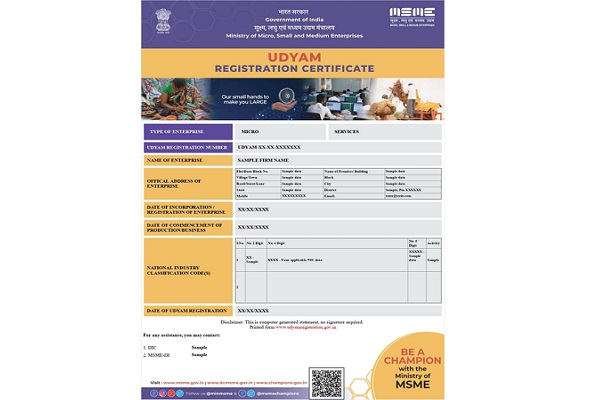
.jpg)

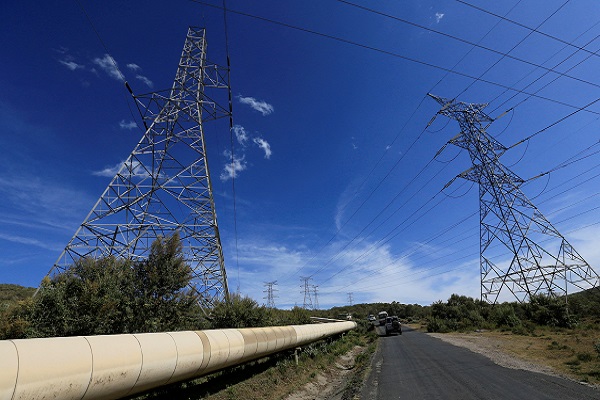
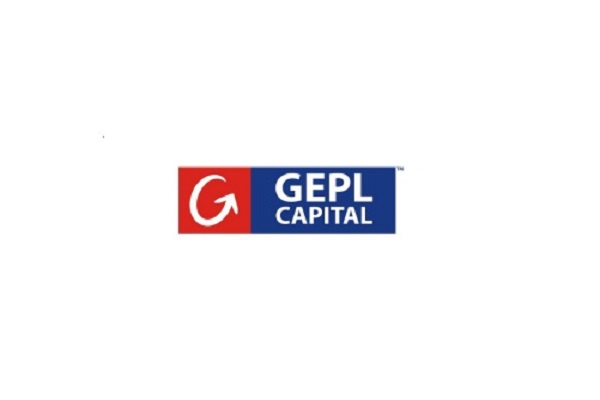
.jpg)

.jpg)
